Is the glass of water half empty or half full? That old saying about making the best of a situation applies to waterlogged areas of an outdoor space.
Even a yard that’s more on the half-full side of things with regular standing water and puddled spots can be seen as an opportunity to both mitigate rainwater and create a pleasant vista. A rain garden, in which a 4- to 8-foot hole in the soil is made and then filled with hardy, native plants, addresses water issues while lending beauty to an outdoor space.
Ideally placed at the end of a gentle slope for optimal percolation, a rain garden allows for storm water and runoff to be absorbed faster and better in the ground. This helps prevent flooding and erosion.
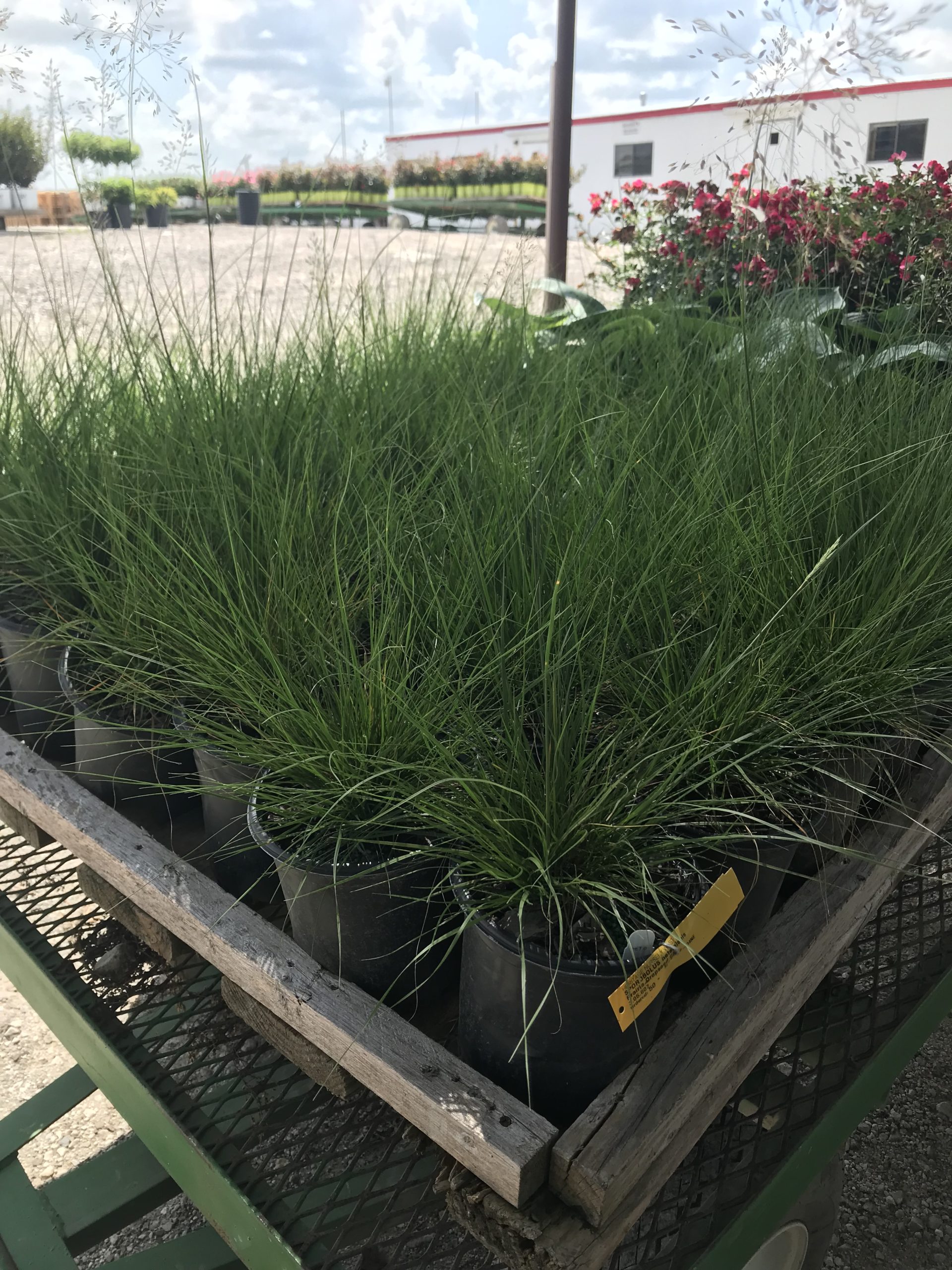
Prairie Dropseed leaving our shipping dock.
Once you choose where to create your rain garden and how to engineer it based on your landscape attributes and soil type, the fun begins with adding water-tolerant plants. Natives work best because they are already adapted to the soil and climate condition in your area. As with any garden, it’s good to choose a mix of varieties for practical and aesthetic reasons.
Here are some of favorite plants for rain gardens:
• Switchgrass: There are several varieties of switchgrass to choose from for your rain garden. We like Panicum virgatum ‘Northwind’ for its subtle olive-green, blue-tinged foliage and sturdy upright habit. Plant it in full sun and it will thrive in a range of soil types.
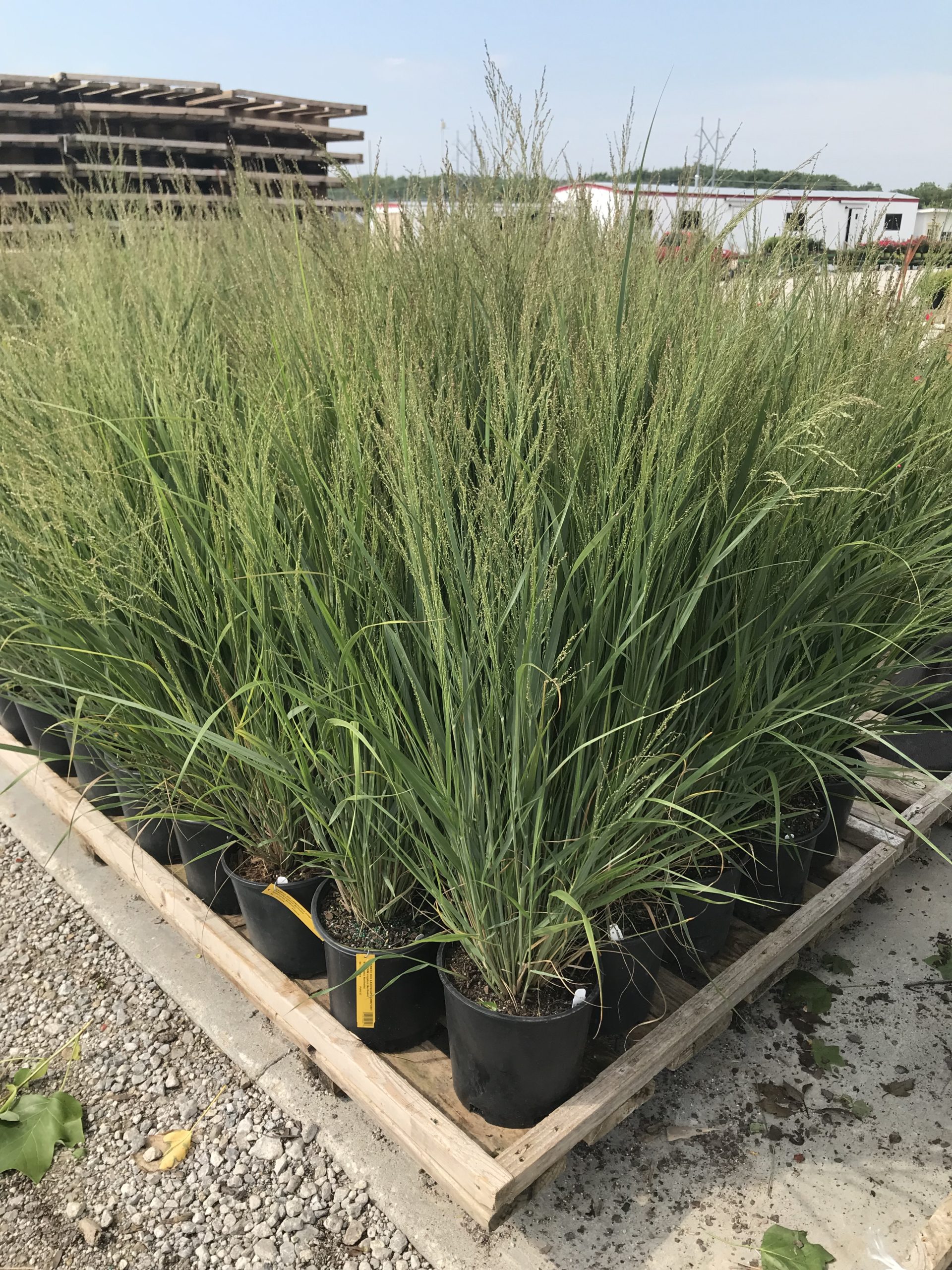
Our crop of Panicum virgatum ‘Northwind’.
• Korean Feather Reed Grass: Cream-colored plumes are a hallmark of Calamagrostis brachytrica, along with a mound of narrow green leaves. The summer ornamental grass, which can grow to 4’, does best in sun but tolerates some shade.
• Northern Sea Oats: Known formally as Chasmanthium latifolium, this variety of grass is often chosen for its bamboo-like foliage and showy flowers that tend to ripple in the summer wind. We also like it because it’s easy to grow in full sun or shade and provides great winter interest.
• Prairie Dropseed: There is a reason why Sporobolus heterolepis is a popular ornamental grass: it is a native prairie grass with a sweet fragrance and fine textured green blades. It may look delicate, but Prairie Dropseed is hardy and deer-resistant.
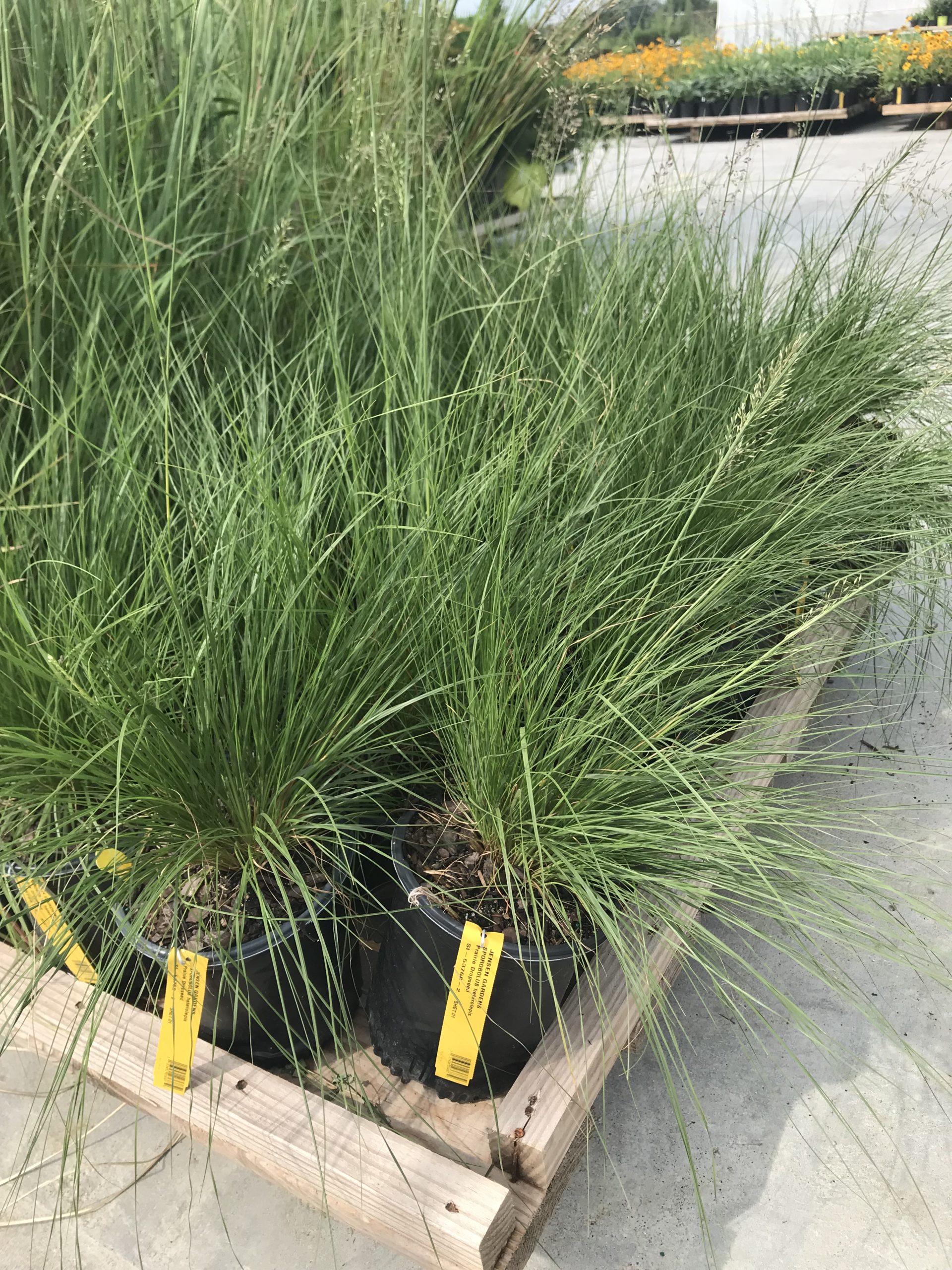
Our crop of Prairie Dropseed.
• Lady Fern: Athyrium filix-femina forms in clumps and is known for its contrasting lacy-green fronds. These do well in part-shade rain gardens.
• Milkweed Butterfly: Asclepia tuberosa does triple duty: it attracts pollinators, helps absorb water and blooms with bright orange flower heads.
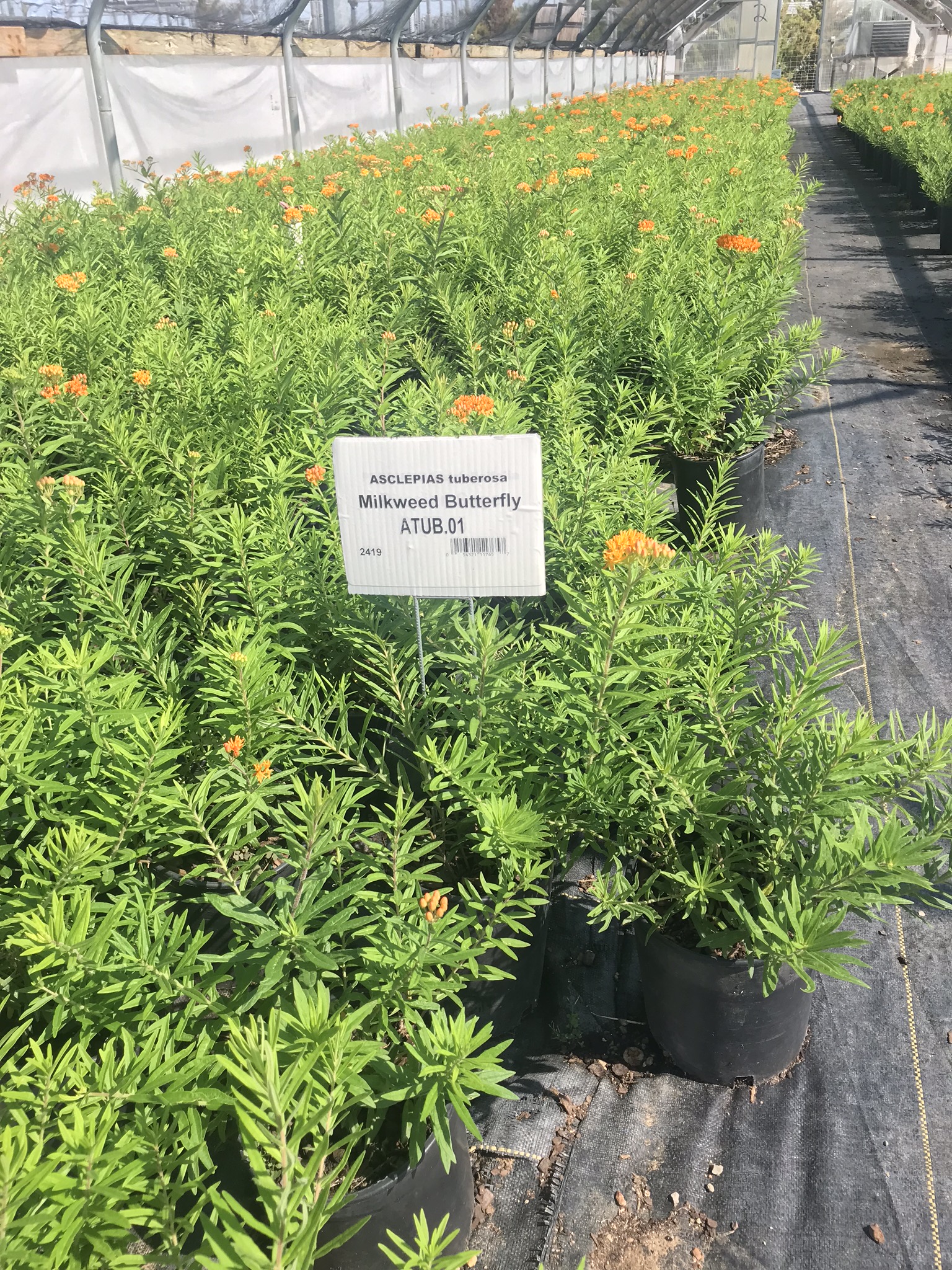
Our crop of Milkweed Butterfly.
• Daylily: The perennially popular daylily is a staple in rain gardens, lending color and a familiar look and shape.
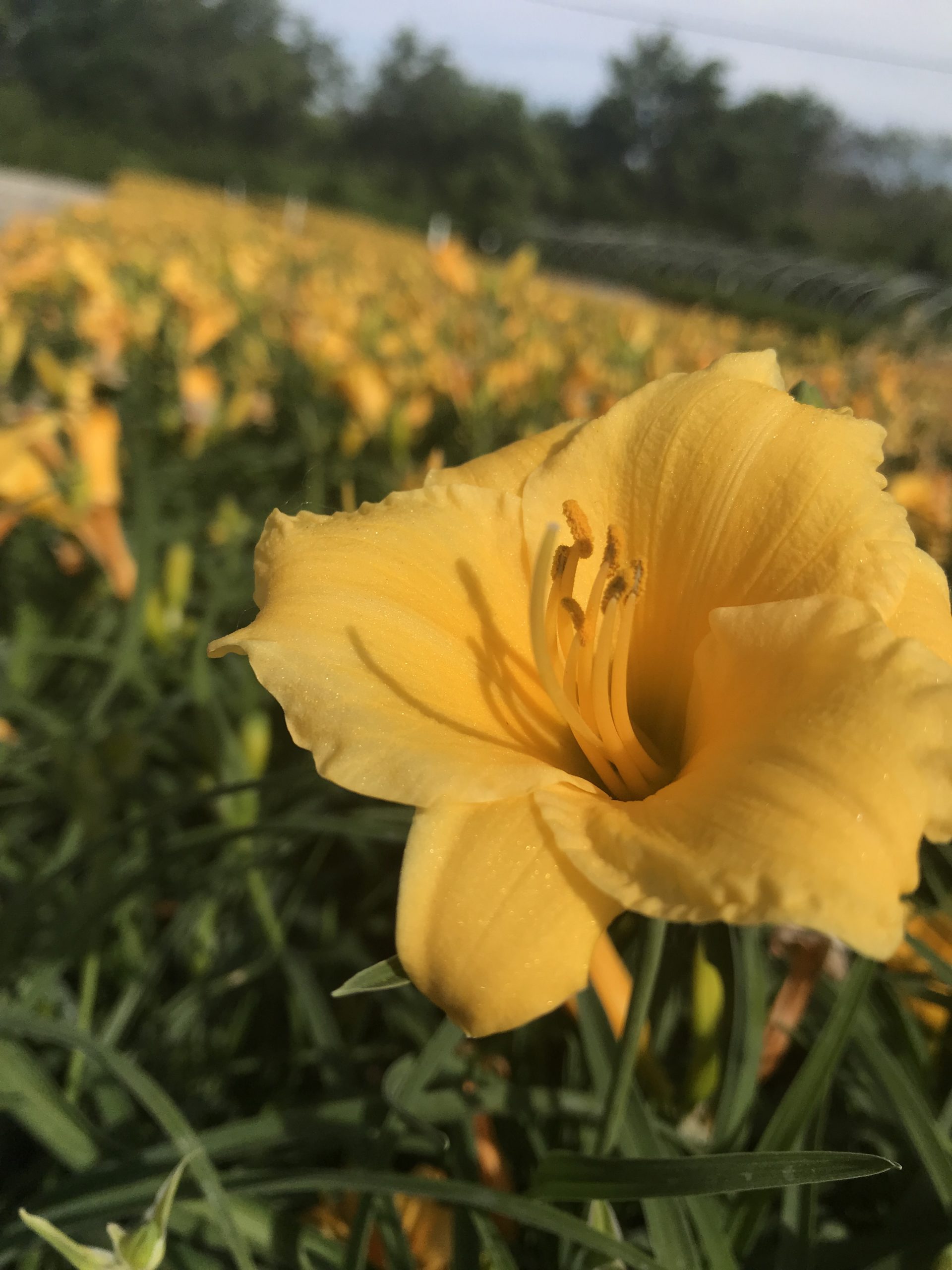
A beautiful Daylily Stella D Oro.
These are just a few “drops in the bucket” of plants that can be used in rain gardens. To learn more about hardy varieties of perennials, grasses and more, please visit the Loma Visa Nursery online catalog.
Learn More About Plants From Us!
Our staff members are experts in the field! We love helping people learn and understand more about healthy plants that perform well in Midwest landscapes. Feel free to email us at sales@lomavistanursery.com
Connect with us!
Stay up-to-date on our plant recommendations, growing tips, and more by following us on social media.
